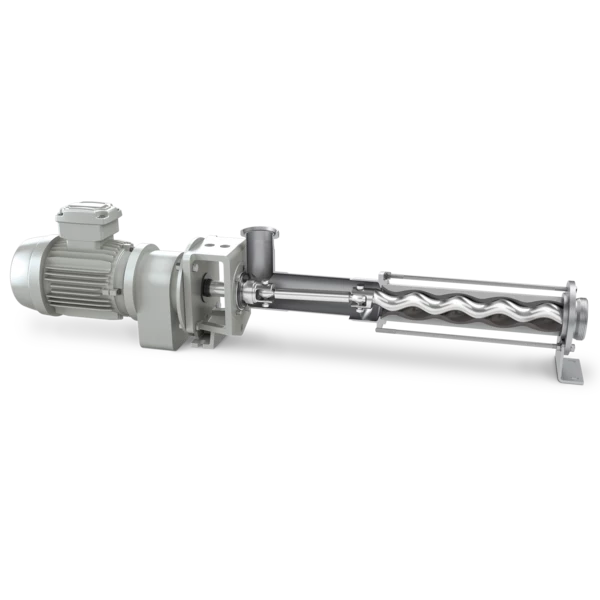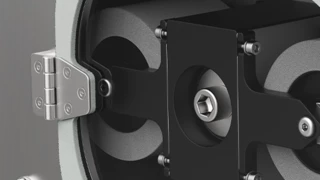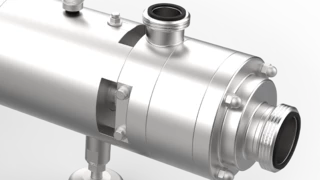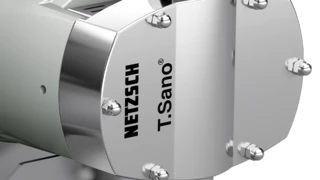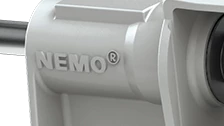Cukiernie i piekarnie
How to Pump Chocolate Gently at a Constant Temperature
With this NETZSCH pump, you produce chocolate of the highest quality
Unsteady temperatures, viscosity fluctuations and thus destroyed chocolate consistency sounds familiar? NETZSCH Pumps & Systems is the right choice if you struggle with these challenges daily.
Przed ponad 10000 lat człowiek zaczął uprawiać zboże. Początkowo zboże było rozdrabniane, mieszane z wodą i spożywane w postaci papki. Dopiero w późniejszym czasie zaczęto je suszyć na gorących kamieniach (prażyć). Dzięki wynalezieniu pieców oraz odkryciu właściwości drożdży chleb stał się podstawowym produktem żywnościowym dla wielu społeczeństw. W starożytności drożdże uprawiali Egipcjanie i używali ich do pieczenia. Udoskonalano również coraz bardziej piece piekarskie. Przed 5000 lat w Egipcie znano już ponad 30 różnych rodzajów chleba. Umiejętność wypieku chleba przywędrowała do Europy przez Grecję ze Starożytnego Rzymu. W Europie opracowano największą liczbę różnych gatunków chleba. Wyroby piekarnicze dzieli się na chleb, małe pieczywo (precle, bułki, croissanty) oraz wyroby cukiernicze (ciastka, ciasta, torty), przy czym różnica leży w składzie ciasta. Najważniejszymi składnikami różnych rodzajów ciasta jest mąka, woda lub mleko, sól, cukier, drożdże, jajka, masło lub olej oraz przyprawy. Po wymieszaniu składników i etapie fermentacji ciasto jest wypiekane w temperaturze ok. 180 do 250 °C do postaci chleba.
Wyroby cukiernicze piecze się w cukierni. Z biegiem lat ciasto na chleb niektórzy piekarze (późniejsi cukiernicy) zaczęli wzbogacać miodem, cukrem, przyprawami, marcepanem czy czekoladą. I tak powstały ciasta, torty, praliny, lody, kandyzowane owoce i wszelkie inne słodkości i pyszności.
W nowoczesnych zakładach i dużych piekarniach wyporowe pompy ślimakowe NEMO® od dziesięcioleci sprawdzają się w najprzeróżniejszych, niezwykle wymagających zastosowaniach. I tak dostępne są na przykład specjalne wersje pomp do tłoczenia czekolady i marcepanu. Do tłoczenia wrażliwych drożdży wykorzystuje się higieniczną pompę NEMO®. Oprócz różnych rodzajów ciasta pozostałe pompowane media to tłuszcze, oleje, miód, marcepan, masa jajeczna, soki owocowe, aromaty, glukoza, masa migdałowa, pasta orzechowa, owoce, żelatyna, nadzienie waflowe. Przy dobieraniu pompy jej typ zależy od właściwości medium w danym stadium procesu produkcyjnego. Nasi eksperci dla każdego znajdą właściwe rozwiązanie.

Konsultacje indywidualne
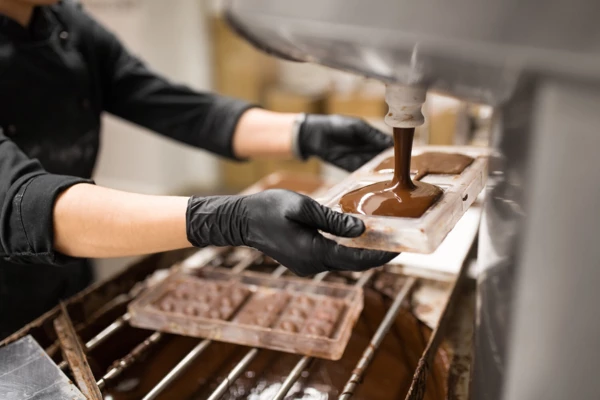
How pumps affect the quality of chocolate
We all know and love chocolate, but hardly anyone is aware of the challenges of manufacturing. Statistically, every German citizen eats around 9.5 kg of chocolate in bars, hollow figures, pralines and other similar products every year. Consumption rises sharply, especially at Easter and Christmas. Despite the popularity of chocolate, its production could be more straightforward. One significant influence on the chocolate’s quality is the pumps used in its production. High shear loads, for example, can cause abrasion and damage to the chocolate, affecting its texture and appearance. In addition, chocolate must be pumped at certain temperatures to maintain consistency. The quality of chocolate can also be negatively affected if the pumps cause a change in viscosity or if residues and impurities remain due to the poor cleanability of the pumps.
What you need to bear in mind when pumping chocolate
The secret of high-quality chocolate is the optimal configuration of the fat crystals they contain, which depends directly on the tempering. If it is too high or too low, the mass no longer melts on the tongue or does not have an appealing gloss but appears milky and dull. In addition, the viscosity changes with the crystal content, which can lead to problems during further processing and filling. Tempering, therefore, is decisive for the quality. That's why pre-crystallised chocolate requires gentle conveying at a constant temperature. Thus, the global specialist in complex fluid management provides a pump that covers all these requirements.
How to pump chocolate at a constant temperature
The solution is called: NEMO® BH hygienic pump in compact block design with an adjustable heating jacket. Thanks to its innovative design, the progressing cavity pump guarantees gentle pumping. The technology is based on the coordinated geometries of a helical rotor and its surrounding stator. Due to the size of the chambers and the low sliding speeds of the rotor, even larger solids, such as nuts or brittle, can be conveyed without damage. In addition, thanks to the heating jacket, you can regulate the temperature of the chocolate and keep it constant. The heating jacket surrounds the pump from the mechanical seals over the entire length to the discharge nozzle. This prevents temperature fluctuations and the associated reduction in quality.
The progressing cavity pumps from NETZSCH also offer you CIP - "Cleaning-In-Place" and SIP - "Sterilisation-in-Place". Using this, you can clean or sterilise the pump without removing it from the system. This prevents residues and contamination. By the way, you save time and money during cleaning. Poor quality due to fluctuating conveying conditions when pumping chocolate is now a thing of the past. What are you waiting for? Get a consultation from the experts at NETZSCH now and pump gently at a constant temperature in the future.
NEMO® BH hygienic pump in compact block design
- Medium: Chocolate
- Capacity: 25 m³/h
- Pressure: Max. 12 bar
